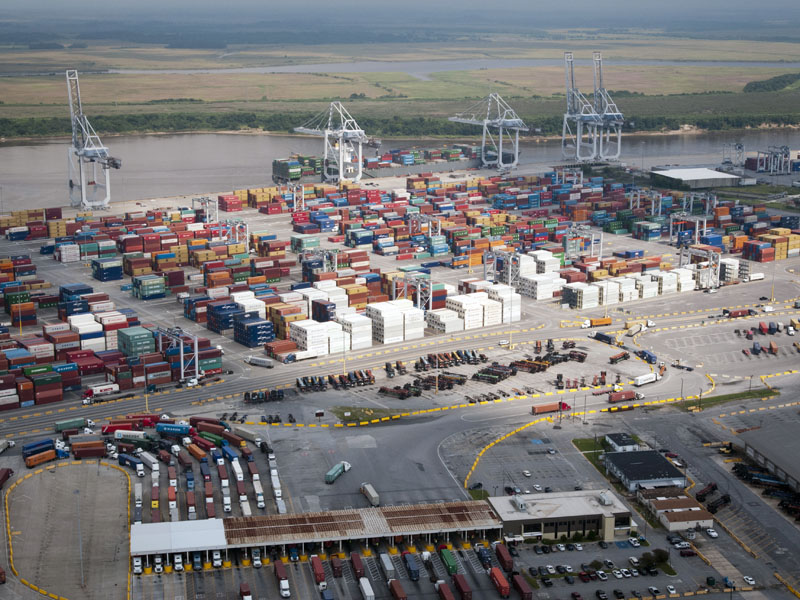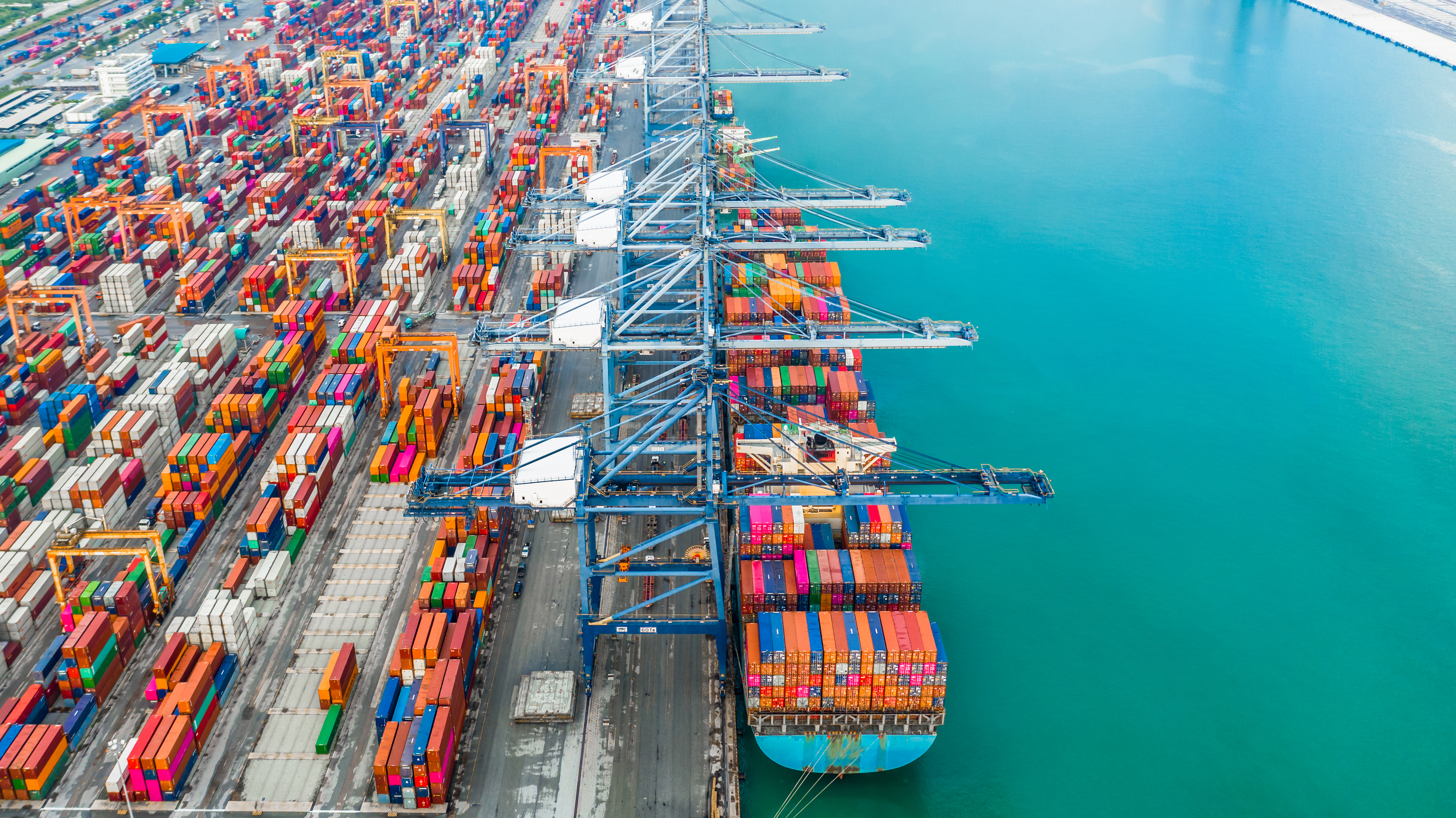SHIPPERS RUSH TO CLEAR IMPORT CONTAINERS FROM US EAST COAST PORTS
Queues of trucks are growing at US East Coast ports and shipping lines are rolling out contingency measures as a strike by dockworkers is now just a week away.

File photo of Georgia Ports
At a recent Friday meeting I attended at one East Coast port, a top port official told me that the line of trucks picking up inbound boxes was far larger than normal, with cargo receivers seemingly bracing for a potential shutdown at the end of the month.
This observation is in line with advisories from shipping lines to their customers. Ocean Network Express (ONE) is encouraging cargo owners to pick up containers by 30 September and warns that ports are advising reefer containers would not be monitored in a shutdown. Maersk similarly advised customers with imports to expedite documentation and customs clearance and retrieve cargo promptly as the ports would be inaccessible during any work stoppage. Hapag-Lloyd offered similar advice to its customers in terms of expediting clearance and retrieving cargo ahead of a work stoppage.
ONE is also omitting port calls on five services into the US East Coast in the coming days with cargo discharged at alternative ports in an effort to deliver boxes before any shutdown. ONE said it, “highly recommends picking up the cargo at alternate discharging ports prior to October 1, 2024”.
Official conversations between that International Longshoremen’s Association (ILA) and the United States Maritime Alliance (USMX) have not resumed; USMX, in a statement, said: “Despite additional attempts by USMX to engage with the ILA and resume bargaining, we have been unable to schedule a meeting to continue negotiations on a new Master Contract. We remain prepared to bargain at any time, but both sides must come to the table if we are going to reach a deal, and there is no indication that the ILA is interested in negotiating at this time”.
USMX also indicated a willingness to work with the Federal Mediation & Conciliation Service (FMCS), a part of the US Department of Labor, on a mediation.
The gap seems to be wider than the beamiest containerships calling at US ports; the ILA, noting the windfalls earned by the big liners during aftermath of the Covid supply chain disruptions, is reportedly looking for wage increases that would amount to 80% over the six year timeframe of a contract. In contrast, the USMX continues to point to the 32% agreed to by longshoremen on the US West Coast during Summer, 2023.
Further complicated matters is the ILA insistence that terminal operators limit their pursuit of automated cargo handling. Bulk cargo generally would not be affected by ILA labour actions.
The carriers (closely linked to the terminals through actual facility ownership, or through long term contractual relationships with financial owners of terminals) are also readying for the worst case - an actual strike - and have announced surcharges on cargo moves at East Coast and Gulf Coast ports. CMA CGM, Hapag-Lloyd, and MSC have all announced surcharges ranging from $800 per teu through to $3,000 for a 40-and-45-footers on outbound and inbound cargo.
Lines are also making preparations for vessels that would arrive at the US East Coast after a 1 October shutdown has started, and Maersk said it expects vessels enroute to ILA affected ports to anchor temporarily. “Daily reviews will determine port calls, and adjustments will be made as needed. Options are being considered based on the affected services and ports. Our aim is to minimize delays and maintain schedules,” the line told customers.
For exports ONE said it would continue to accept dry cargo container bookings but would pause all bookings for reefer cargo from 1 October.
Economic analysts are also weighing in regarding the potential costs of work stoppages at East Coast and Gulf Coast ports. One analyst, Oxford Economics, referred to the daily cost of a strike exceeding $1 billion, and noted that ripple effects from an extended strike of two weeks duration would disrupt supply chains out into 2025.
Chris Butler, CEO of National Tree, an online importer artificial Christmas trees and holiday decorations, said that while it had taken “every precaution” not to get goods held up at US East Coast ports they estimated 15% of their goods would be stranded if a strike started on 1 October. “Every one day of strike equals five days of delayed shipments, making it critical to come to a speedy agreement,” he said.
Looming in the background is the countdown to the US elections on November 5; so far, neither Kamala Harris, the Democratic candidate, nor her Republican opponent- Donald Trump, have weighed in. One device in the Federal government’s labour-related toolkit is the Taft Hartley Act, where an 80 day “cooling off period” could be imposed on the parties. So far, un-named sources within the Biden administration, talking to news media, have indicated that the government would not intend to invoke it.
Source: Seatrade Maritime
------
ASL Logistics US - Your True Shipping Partner
.png)
Reach ASL Logistics US immediately for advice on sea freight service! Or you can contact us directly to receive detailed information:
⚓ ASL Logistics US - Your True Shipping Partner
📍 https://aslc-us.com/
☎ +1 56 2906 3906
✉ phong@aslc-us.com
Related services: Sea Freight, Air Freight, Customs Broker Service, Domestics Trucking, Multi-modal Transportation, Warehousing Services, Shipping and Logistics Services to The U.S,


.jpg)
